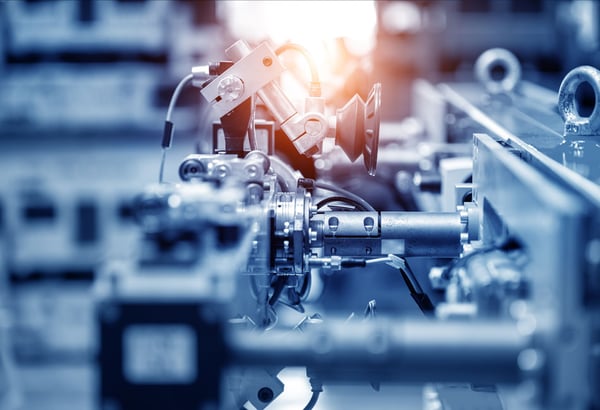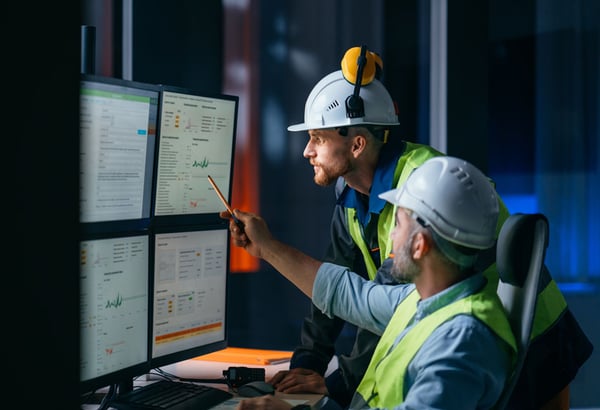In our previous blog post in the series, we looked into the world of soft sensors, examining their functionality and potential advantages. The blog concluded on a somber note, underscoring the frequent failure of projects to achieve their intended goals.
Common steps for building a soft sensor
Building a soft sensor typically involves several key steps, including data collection, feature selection, model development, training, validation, deployment, continuous monitoring, and maintenance. Each step comes with its challenges, requiring careful consideration to ensure accuracy and efficiency.
1. Data Collection:
At the foundation for developing a soft sensor model lies historical data that is collected from various hard sensors. Data collection can be considered the most crucial part of building a soft sensor as the quality and quantity of the data to a large extent determines whether a soft sensor will be viable.
One of the most significant hurdles involves dealing with variable process durations, numerous process phases, and the potential for incorrect model inputs stemming from sensor malfunctions. Inaccurate or noisy data can lead to misleading predictions, potentially compromising the reliability and efficiency of the production process.
2. Feature Selection:
The collected data is hereafter analyzed to select relevant features that are important for estimating the target parameter. Feature selection helps reduce noise and improve the accuracy of the model. However, feature selection is often done manually or semi-manually, where an inadequate selection can result in suboptimal soft sensor performance through reduced accuracy of the model’s ability to predict values.
3. Model Development:
Various modelling techniques can be used to develop a soft sensor, such as regression models, machine learning algorithms, or process models. In industrial settings, soft sensors are typically developed using specialized chemometrics software or software modules provided by vendors of online analyzers, with the option to utilize cloud-based platforms for enhanced flexibility and collaboration.
The complexity of data-driven models and algorithms used in soft sensors can make development challenging and resource-intensive. Process expertise needs to be complemented by data science know-how as well as computational resources.
4. Model Training:
During the model training phase, the chosen model(s) learns the relationships between the input features and the output by adjusting its parameters. A significant challenge can arise due to a scarcity of historical data, particularly in processes characterized by swift fluctuations.
5. Validation:
To make sure that the model meets the required accuracy standards, the soft sensor is tested against a validation data set. If not approved, a jump back to the drawing board is necessary. Yet, as a set of data can only cover so much of the target process, although validated and approved, the model may still fall short in accommodating the full spectrum of variations and scenarios found in complex production processes.
6. Deployment:
As a soft sensor matures, the next step is deployment. This means integrating the validated soft sensor model into the control or monitoring systems used in the industrial process. However, this phase comes with its fair share of challenges, particularly related to ensuring compatibility and overcoming data integration issues when incorporating soft sensors into existing systems.
7. Maintenance:
Like physical sensors, soft sensors need ongoing attention. Regular updates and adjustments are crucial to maintaining accuracy and consistent performance. Although time-consuming, neglecting these essential tasks can lead to a gradual decline in predictive accuracy, undermining the core function of the soft sensor.
How to tackle the shortcomings of soft sensors
The typical solution to overcoming the limitations of soft sensors often involves hiring top-tier data scientists. While a valid solution, this route can be costly, and time-consuming, and is still reliant on your experts’ input and software. Furthermore, a data scientist is only human, which always involves the risk of human error and potentially prolonged processes.
At SimAnalytics, we've taken a different approach to conquer these challenges and developed a novel way to build soft sensors. Our expertise lies in automation and machine learning, allowing us to streamline soft sensor development and maintenance. Furthermore, our advanced monitoring software, Factory Harmonizer, offers an ideal platform for deployment.
Our approach to soft sensor development simplifies the process as compared to traditional methods. At the core of our soft sensors is automated machine learning, which eliminates the need for manual model development. Instead, we concurrently build thousands of models, utilizing various algorithms and hyperparameters to identify the most accurate model for your specific use case. This automation not only saves a substantial amount of time but also aims to deliver superior performance.
Moreover, we specialize in dimension reduction, which replaces the labour-intensive feature selection phase. Dimension reduction uses machine learning to autonomously create a smaller set of new multi-variables from existing variables to improve predictive accuracy. This method does not require extensive expert intervention. We also provide precise and clearly quantified model assessments during development to reduce the risk of deploying models with misleading predictions. So, while the risk of an inadequate data set is still present, the workaround for building and testing a model that is eventually neglected is comparatively very small.
SimAnalytics' soft sensors remain adaptable post-deployment, continuously enhancing accuracy without the need for expert input. Maintenance is also fully automated, alleviating your team of additional responsibilities. Our cloud-based platform, Factory Harmonizer, simplifies deployment, eliminating the need for complex software installations.
To learn more about our soft sensors, book a meeting with one of our process experts.





